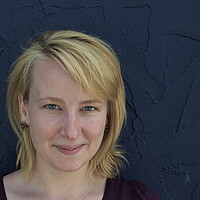Flatlining SAT scores are 'a call to action' for educators
Loading...
More than half of the high school students who took the Scholastic Aptitude Test (SAT) are not prepared for college, according to a report released Thursday by the College Board.
Of the 1.6 million test takers for the graduating Class of 2013, 43 percent met the SAT’s College and Career Readiness Benchmark, and 57 percent did not.
The SAT results “show that we have to be doing a much better job of preparing students for success in college,” says James Montoya, the College Board’s vice president of higher education.
Students who meet the benchmark score of 1550 on their SATs are more likely to enroll in a four-year college, and are more likely to complete their college degrees, the College Board says. A perfect score on the SAT is 2400, and it was achieved by 494 people in 2013, or less than 0.33 percent of all test takers.
An 800 is the perfect score for each of the three sections – critical reading, mathematics, and writing. The national averages for each section were 496, 514, and 488, respectively.
Men scored better in critical reading and mathematics, while women fared better in writing. That pattern that has persisted since the writing section was introduced in 2006, according to average test scores.
Some education specialists, however, are dubious about how much information can be gleaned from test scores.
The SAT report shows a set of correlations, and it does not tell all that needs to be known about what leads to success in college, says Professor Paul Reville, an education expert at Harvard University in Cambridge, Mass.
The results are “relatively rough indicators” that preclude a whole other set of factors about whether a student is ready for college, says Professor Reville. But there is the assumption that a four-year degree is in the student’s future, and that’s not always the case, he explains.
The concern that needs a closer look, he says, is “that we’re not doing a better job teaching a curriculum at a sufficient level to prepare people to do well in college. The signal we get is 40 percent of people need remediation."
While SAT benchmark results have been virtually stagnant for the past five years, there was a slight increase in scores for African-Americans and Latinos.
Among African-American test takers, 15.6 percent met the SAT benchmark, up from 14.8 percent in 2012, and 23.5 percent of Hispanics met the benchmark, an increase from 22.8 percent in 2012.
But those numbers are no cause for celebrating, says Donna Ford, a professor at Vanderbilt University’s School of Education.
“There’s an increase, and I’m happy about that, but it’s still not enough,” says Professor Ford, noting the continued existence of a huge gap between scores of African-American and Hispanic students and those of white and Asian-American students.
Students who met the SAT benchmark were more likely to have pursued coursework in honors or Advanced Placement (AP) coursework, reported a GPA to the equivalent of an "A" or higher, or completed a core curriculum – a minimum of four years of English, three years of mathematics, three years of natural science, and three years of social science and history.
But African-American and Hispanic students generally have less access to academically rigorous environments, or to excel in them, than do white or Asian-American students, says Ford. African-American and Hispanic students simply do not have access to the same quality of primary education, and so are stuck trying to play catch-up academically, she says.
A new version of the SAT is currently in development and could address some of the background disparities among students. A recent survey of college admissions officers found that most say changes are needed to reduce socioeconomic and cultural biases. The new version is due out sometime in 2015.







